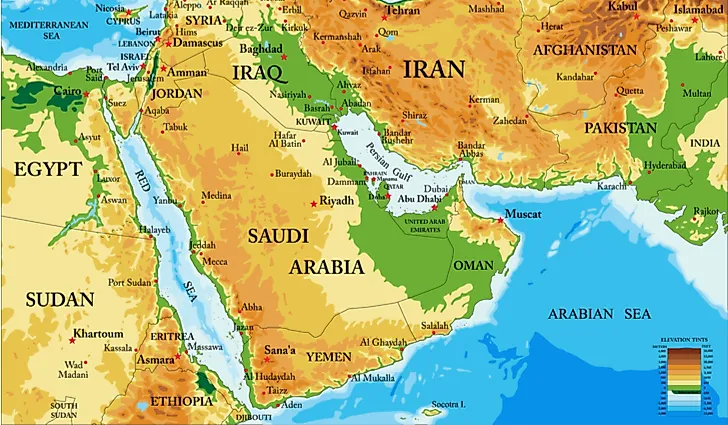Which Continent Is Yemen In?

Yemen covers an area of 203,850 square miles and is found in the western part of Asia. Yemen is located in the Arab peninsula, the world’s largest peninsula, and is the largest state on the peninsula after Saudi Arabia. The nation’s territory encompasses more than 200 islands. Socotra is the largest island under Yemeni control as it occupies an area of about 1,466 square miles. Yemen has a 1,200 mile coastline with the largest section bordering the Gulf of Aden. Yemen is home to about 27,584,213 people according to 2016 estimates. Sana’a, the country’s largest city, is the capital city of the nation.
Bordering States
Yemen shares a land border with two counties: Saudi Arabia and Oman. The border between Saudi Arabia and Yemen stretches for about 1,100 miles and is the state’s longest land border. A treaty signed in 2000, the Treaty of Jeddah, solved a long-standing border dispute between the two countries. To secure its borders from terrorism, Saudi Arabia constructed a barrier running along the shared border with Yemen which the Yemeni government strongly opposed. The border with Oman is about 187 miles long and a barrier was constructed to prevent the impact of Yemen’s civil war spilling over into Oman. Yemen shares its maritime borders with Somalia, Eritrea, and Djibouti. Somalia has the longest naval border with Yemen thanks to Somalia’s long coastline.
Brief History
Humans have lived in the region of Yemen for a long time with records indicating the presence of large groups of people living in the area since 5000 BC. One of the most well-known kingdoms in Yemen’s past was the Sabean Kingdom or the Biblical Sheba. Numerous dynasties came up in the region between the 9th and the 16th centuries, and the Rasulid dynasty was the most prosperous and the strongest. In the 20th century, the country was shared between the British (South Yemen) and the Ottoman (North Yemen) empires. North Yemen became independent in 1962 while South Yemen gained its independence in 1967. The two states were united in 1990 to form one nation.
Demographics
Yemen is a predominantly Muslim state with 35% of the Muslims in the nation belonging to the Shia subgroup. Less than 1% of the nation’s population profess a different faith. Yemen’s rich history has resulted in a multitude of cultural influences primarily Arab. Arabian culture dominates the life of the majority of the population. Arabic is the official language of the country and there are other languages such as English and Soqotri are spoken in the country.











